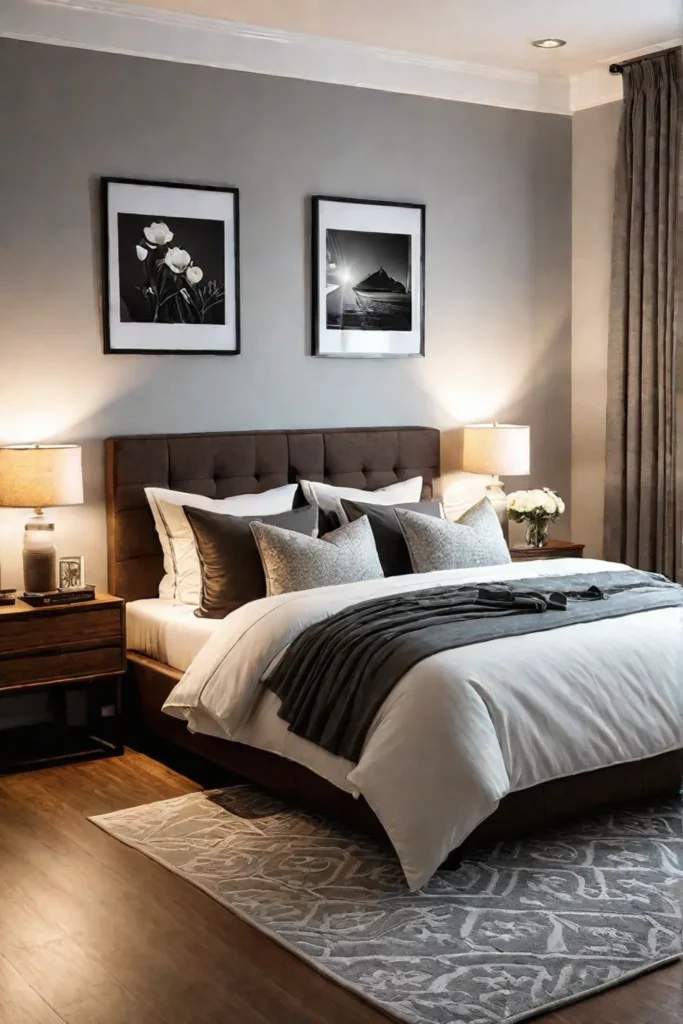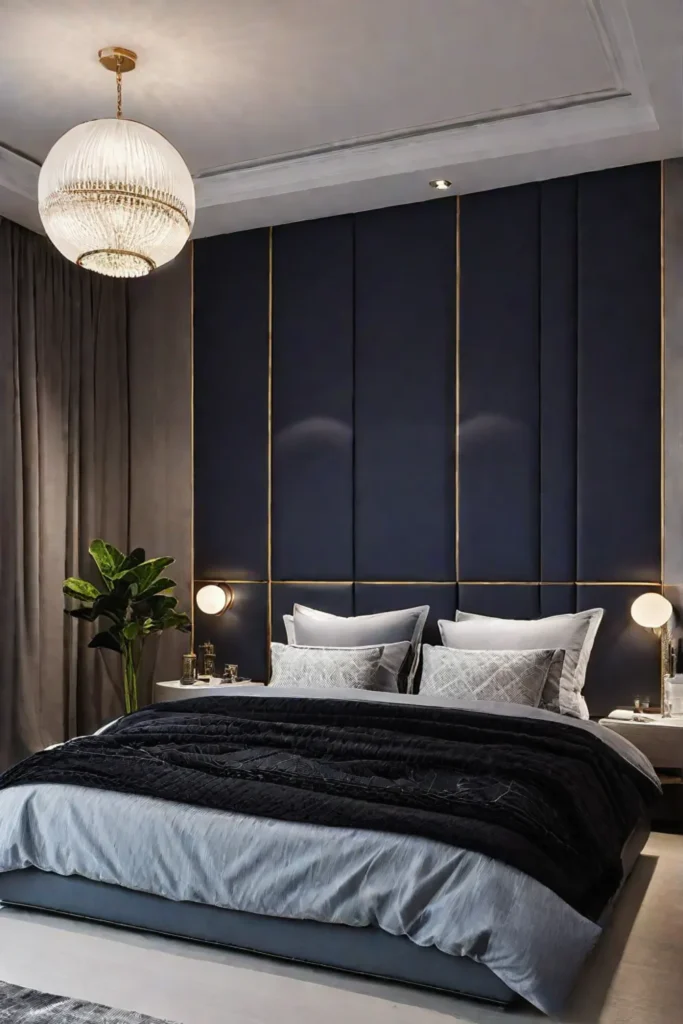Have you ever walked into a small bedroom and felt instantly claustrophobic? It's a common problem, but the solution might be simpler than you think—the secret lies in the power of color. The right paint colors can transform a cramped, uninviting space into a bright, airy oasis.
As a home designer, I've seen firsthand how color can make or break a small bedroom. It's not just about aesthetics - the psychology of color plays a huge role in how we perceive a space. Certain hues can create the illusion of more space, enhance natural light, and even set the perfect mood for relaxation.

In this blog post, we'll explore the world of color and how you can use it to unlock the full potential of your small bedroom. Whether you're a seasoned DIYer or a design newbie, you'll walk away with practical tips and inspiring ideas to make your tiny haven feel like a luxurious retreat.
The Psychology of Color in Small Bedroom Design
Color theory is the foundation of great design and is especially important for small bedrooms. Different colors evoke different emotions and perceptions. Warm tones like red, orange, and yellow can make a space feel cozy and inviting, while cool colors like blue, green, and purple have a calming, relaxing effect.
But it's not just about warm vs. cool. The specific hue you choose can also make a big difference. Lighter colors like white, cream, and pale gray tend to reflect light, creating an airy, open feel. Darker shades, on the other hand, can make a room feel smaller and more intimate.

Understanding these psychological effects is key to choosing the right paint colors for your small bedroom. For example, you might opt for a rich, jewel-toned accent wall to create a cozy, cocoon-like atmosphere. But a soothing blue or green could be the way if you're going for a more serene, spa-like vibe.
Maximizing Natural Light with the Right Paint Colors
Speaking of light, it's a crucial element in small bedroom design. Natural light can make a space feel larger, brighter, and more inviting. But how do you make the most of it? The answer lies in your paint choices.
Light-colored paints like white, ivory, and pale gray are masters at reflecting natural light. They bounce it around the room, making it feel open and airy. On the flip side, dark colors can absorb light, making a small space feel closed off and gloomy.
But it's not just about the color - the paint finish also plays a role. Glossy or satin finishes have a reflective quality that amplifies the effect of natural light, while matte finishes tend to absorb it. So, to maximize the brightness in your small bedroom, consider using a light, reflective paint color with a high-gloss or satin sheen.

And don't forget about the placement of your furniture and decor! Positioning pieces near windows to take advantage of natural light can make a big difference. Mirrors are also a designer's best friend - strategically placed; they can bounce light around the room, creating the illusion of more space.
Illusion of Space: Paint Colors that Visually Expand Small Bedrooms
Now, let's talk about the ultimate trick up a designer's sleeve: using paint colors to create the illusion of a larger space. It's all about understanding how the human eye perceives color and depth.
Lighter, more neutral colors like white, beige, and light gray tend to recede, making a room more open and spacious. On the other hand, darker, more saturated hues can make a space feel smaller and more intimate.
But it's not just about light and dark - how you apply the paint can also make a big difference. Vertical stripes, for example, can draw the eye upward, creating the illusion of height. Horizontal stripes, on the other hand, can make a room feel wider.

And let's not forget about accent walls. A bold, contrasting color on one wall can act as a focal point, drawing the eye and creating the illusion of depth. Just be sure to balance it with lighter, more neutral tones on the other walls to avoid making the room feel too cramped.
Mood and Ambiance: Choosing the Right Paint Colors for Small Bedroom Atmospherics
Okay, so we've covered how color can affect the perception of space. But did you know it can also set the mood and ambiance in your small bedroom? The right paint colors can transform a room from a cozy retreat to an energetic oasis.
For example, warm colors like red, orange, and yellow create a cozy, inviting atmosphere. They're perfect for snuggling up with a good book or enjoying a romantic evening. Cool colors like blue, green, and purple, on the other hand, have a more calming, relaxing effect. They can help you wind down and get a good night's sleep.
But it's not just about the color itself—intensity and saturation also play a role. Bright, bold hues feel energetic and stimulating, while muted, more subdued tones have a soothing, serene vibe.

And let's not forget about the importance of lighting. Warm, soft lighting can enhance a small bedroom's cozy, intimate feel, while cool, bright lighting can make the space feel more energetic and modern.
Coordinating Paint Colors with Small Bedroom Furnishings and Decor
Now that you've learned about the psychological effects of color, it's time to coordinate your paint choices with the rest of your small bedroom's furnishings and decor.
After all, the key to a cohesive, visually appealing small bedroom is balance. You want to create a harmonious blend of colors, textures, and patterns that complement each other and enhance the overall aesthetic.
One way to achieve this is by using a color scheme. Monochromatic, analogous, or complementary color schemes can all work beautifully in a small bedroom, depending on the mood you're trying to create.

For example, a monochromatic scheme using different shades of blue can create a serene, calming vibe. An analogous green, blue, and purple scheme can feel fresh and rejuvenating. And a complementary scheme with warm and cool tones can add a dynamic, energetic feel.
But it's not just about the paint - the undertones of your colors also matter. Paying attention to these subtle hues can help ensure that your paint, furniture, and decor work together seamlessly.
Unlocking the Full Potential of Your Small Bedroom
So there you have it - the power of color in small bedroom design. By understanding the psychological effects of different hues, maximizing natural light, and coordinating your paint choices with the rest of your decor, you can transform a cramped, uninviting space into a cozy, inviting oasis.
Remember, the key is to have fun and experiment. Don't be afraid to try bold, unexpected color combinations or unique paint finishes. After all, small bedrooms are the perfect canvas for creative expression.

So what are you waiting for? Grab a paintbrush and get ready to unlock the full potential of your small bedroom. With the right color choices, you'll be well on your way to creating a visually stunning space and a true reflection of your style and taste.

